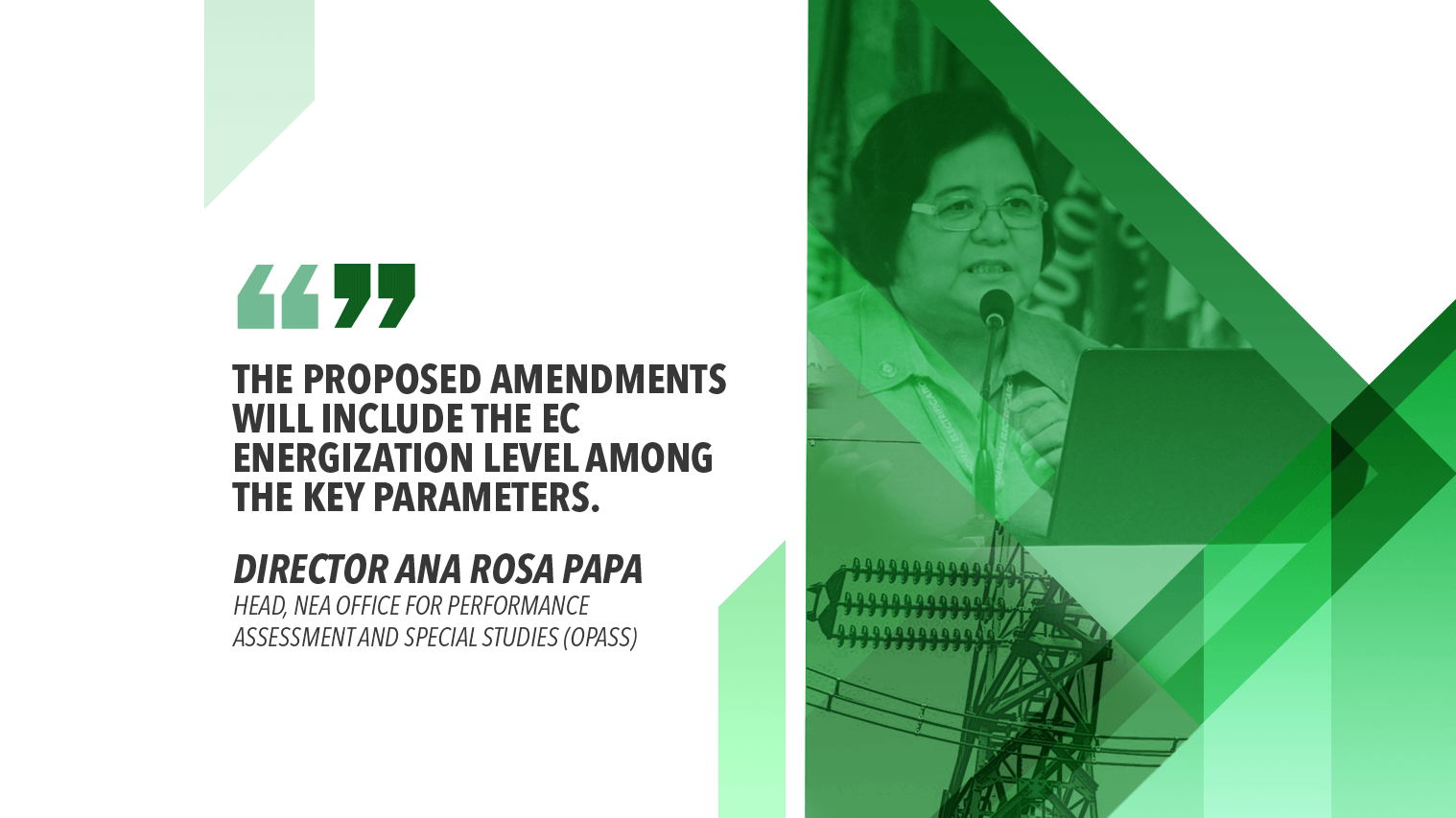The National Electrification Administration (NEA) is proposing some changes to improve its existing guidelines in determining the overall operational performance assessment of electric cooperatives (ECs) nationwide.
The proposed amendments will include the EC energization level among the key parameters, said Director Ana Rosa Papa, head of the NEA Office for Performance Assessment and Special Studies (OPASS).
Energization level is measured by the number of consumer connections a power co-op achieves under a given timeline based on the official reports and/or documents it submitted through the NEA Business Intelligence Technology (NEA-BIT) web portal.
“Energization level is measured by the number of consumer connections a power co-op achieves under a given timeline based on the official reports.”
At present, the NEA evaluates and determines the overall performance of power distribution utilities under its supervision annually using the two criteria: Key Performance Standards (KPS), which account for 80 percent; and EC Classification, 20 percent.
According to the OPASS chief, these criteria are designed to measure the coops’ financial, institutional and technical performance, as well as “to promote accountability and responsibility in their compliances and fiduciary obligations.”
The rural electrification agency has already sought comments from its stakeholders on the proposed changes to EC performance assessment guidelines before submitting it to the NEA Board of Administrators for approval.
Once approved and published in a newspaper of general circulation, the NEA will implement the revised policy guidelines beginning next year. This will also serve as basis for crafting the performance incentive mechanisms for the ECs.
The mandatory assessment on the performance of non-profit distribution utilities in the country started way back in 1982 to keep track of the viability of their operations economically and financially. Since then, the rules and guidelines have evolved and changed significantly.
From 1982 to 1993, the state-run agency based the parameters on what was stipulated under Presidential Decree No. 269, otherwise known as the “National Electrification Administration Decree,” in which power distribution utilities were categorized into four letter grades—A to D.
“According to the OPASS chief, these criteria are designed to measure the coops’ financial, institutional and technical performance
These categories expanded to six (A+, A, B, C, D and E) from 1994 to 2011 or up until Republic Act (RA) No. 9136 otherwise known as the “Electric Power Industry Reform Act (EPIRA) of 2001” was enacted.
In 2012, the NEA introduced its KPS, which covered financial, institutional, technical and reportorial compliances of the ECs as part of the overall evaluation of their operational performance.
The state-run agency then revised its rules and guidelines from 2013 to 2017 based on the provision of RA 10531 or the NEA Reform Act of 2013, wherein the agency must develop financial and operational parameters to serve as basis for its intervention.
This includes the EC Classification, which covered seven financially-driven standards and parameters including power accounts payable to the National Grid Corporation of the Philippines (NGCP).
The ECs, under the current policy guidelines, are rated from AAA as the highest to D as the lowest.

